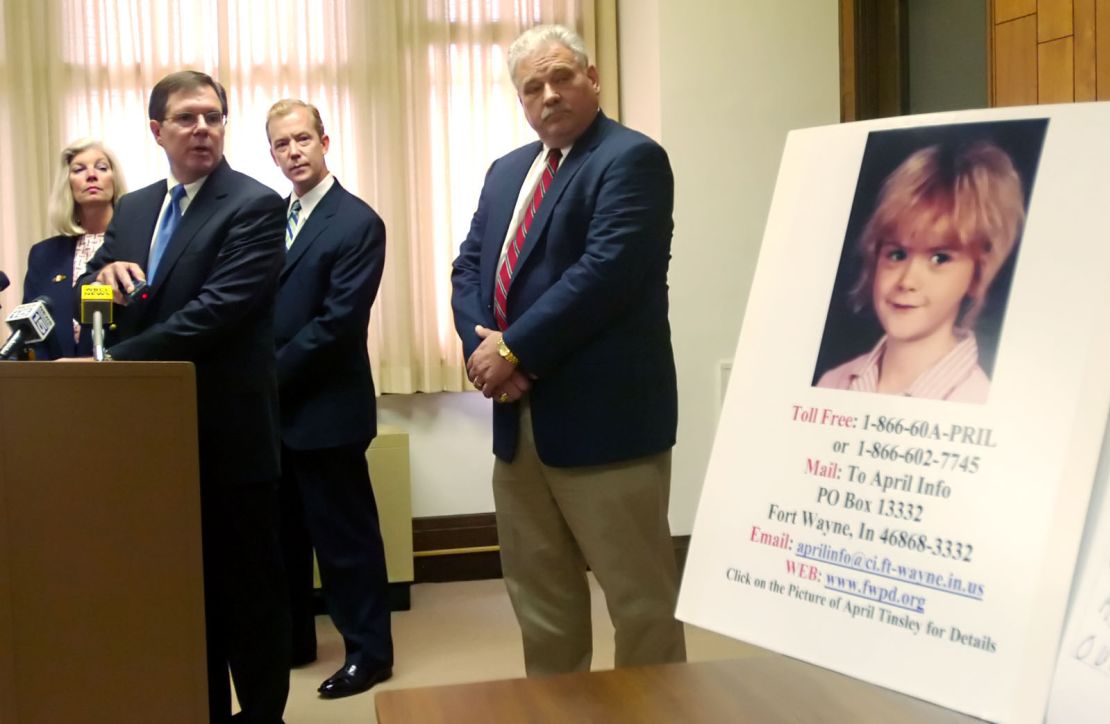For more than three decades, the city of Fort Wayne, Indiana lived under the shadow of a nightmare — a predator who stole the life of eight-year-old April Marie Tinsley and then taunted the community with disturbing messages that froze entire neighborhoods in fear. It was a question that haunted parents, detectives, and a grieving family for generations:
Who murdered April Tinsley?

On April 1, 1988, April vanished while walking home from a friend’s house. What followed was a desperate search that gripped the town — a search that ended in heartbreak when her body was found days later, brutally confirming that she had been abducted, raped, and murdered. The horror of her death shook Indiana to its core.
Police had DNA. They had clues. They had determination.
But they did not have a name.

And then, the monster began to reveal himself.
In 1990, a taunting note appeared — a chilling message claiming responsibility for April’s murder. In 2004, more messages surfaced, this time left on bicycles belonging to young girls. Each one was a cruel reminder that April’s killer was still out there… watching… waiting. The case became one of the most terrifying unsolved crimes in American history.
Everything changed in 2018.

A revolutionary forensic technique — genetic genealogy — finally cracked the silence. Detectives matched DNA from the crime scene to genetic material found in the trash of John D. Miller, a quiet man living just miles from where April was taken. When confronted, Miller confessed in cold, explicit detail, describing the abduction and murder that had tormented the town for 30 years.
His confession was grotesque. His intentions, chilling.
And his guilt, undeniable.

Miller accepted a plea deal and received an 80-year prison sentence — effectively ensuring he will never walk free again. Though justice was finally served, no sentence could ever heal the lifelong wound carried by April’s family, or erase decades of fear endured by the community.
But Fort Wayne has refused to let April be forgotten.

Today, memorials stand in her honor, and the detectives who refused to give up — even after decades of dead ends — have been recognized nationally for their relentless pursuit of truth. April’s legacy lives on as a powerful reminder of why cold cases must never be abandoned, and why persistence can bring justice, even when hope seems lost.

April Tinsley’s story is heartbreaking.
Her memory, everlasting.
And her case — one of the darkest in Indiana’s history — is a testament to the power of science, determination, and a community that never stopped demanding answers.





